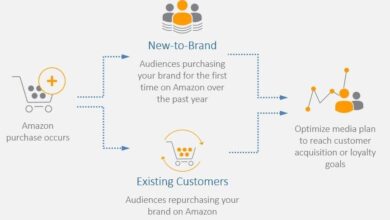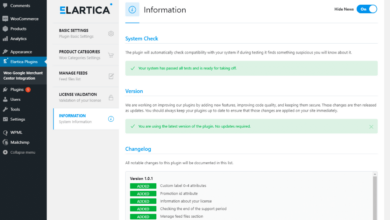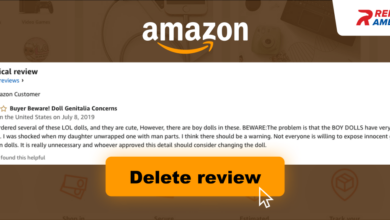Is Amazon FBA Worth It? A Deep Dive
Is Amazon FBA worth it? This in-depth exploration delves into the world of Fulfillment by Amazon, weighing the pros and cons for aspiring entrepreneurs. We’ll navigate the complexities of costs, product suitability, and customer experience to determine if Amazon FBA aligns with your business goals. From understanding the basics of FBA to long-term scalability, this comprehensive guide will equip you with the knowledge needed to make an informed decision.
This guide explores the core aspects of FBA, including the process, costs, and necessary steps to succeed. We’ll cover everything from product selection to managing your inventory, providing actionable insights based on real-world examples and industry best practices. This detailed analysis aims to provide a clear perspective on whether Amazon FBA is the right path for you.
Introduction to FBA
Amazon Fulfillment by Amazon (FBA) is a popular service that allows third-party sellers to leverage Amazon’s vast infrastructure for warehousing, packaging, and shipping their products. This significantly reduces the logistical burden on sellers, allowing them to focus on sourcing and marketing. FBA empowers sellers to reach a wider customer base and potentially boost sales by utilizing Amazon’s established distribution network.The core concept of FBA revolves around Amazon handling the fulfillment process, from storage to shipping.
Sellers send their products to Amazon’s fulfillment centers, where they are stored, processed, and shipped to customers. Amazon manages the entire process, including picking, packing, shipping, and customer service, freeing sellers from the complexities of handling these tasks themselves. This approach significantly reduces the operational overhead for sellers, often allowing them to scale their business more efficiently.
Types of Products Suitable for FBA
FBA is generally suitable for a wide range of products, but certain types excel. Products with standardized dimensions and weight are easier to manage in Amazon’s fulfillment centers. Products that can be efficiently packaged and shipped without requiring special handling are better candidates. Considerable factors influence suitability, including product size, weight, fragility, and potential for damage during transit.
Comparison of FBA to Other Fulfillment Methods
| Feature | FBA | Direct Shipping |
|---|---|---|
| Inventory Management | Amazon manages inventory storage and handling. | Seller manages inventory storage and handling. |
| Shipping | Amazon handles shipping and delivery. | Seller handles shipping and delivery. |
| Customer Service | Amazon handles customer service inquiries related to orders. | Seller handles customer service inquiries related to orders. |
| Cost | FBA fees apply based on storage, handling, and shipping. | Shipping costs are borne by the seller. |
| Scalability | Easier to scale operations by utilizing Amazon’s network. | Scaling can be more challenging due to handling the logistics. |
| Customer Experience | Generally, better customer experience due to Amazon’s reputation and infrastructure. | Customer experience can vary based on seller’s efficiency. |
This table illustrates the key differences between FBA and direct shipping. Choosing the right fulfillment method depends on factors such as the volume of orders, budget constraints, and desired level of customer service.
Cost Analysis
Understanding the financial implications of using Amazon FBA is crucial for success. This section delves into the various costs associated with FBA, from product acquisition to Amazon’s own fees, helping you make informed decisions about whether FBA is the right choice for your business. It also compares FBA costs to other fulfillment methods.The costs of FBA are not always straightforward.
While it offers significant potential, understanding the breakdown of fees and potential pitfalls is essential to profitability. You’ll need to meticulously track these expenses to ensure your sales are generating a positive return.
Product Costs
Product costs are the foundation of any business, and FBA is no exception. This includes not just the purchase price but also any additional costs like import duties, packaging materials, and potential markups to achieve profitability. A critical aspect is evaluating the market price for your product and setting a competitive price point to attract customers while still maintaining a healthy profit margin.
Storage Fees
Amazon FBA charges storage fees for the space used to hold your inventory. These fees vary depending on the type of product and the storage location. Understanding these rates is essential to managing your inventory costs effectively. The fees are generally based on cubic volume, which means larger or heavier items may cost more to store than smaller ones.
Also, some items are subject to special storage requirements which may increase costs.
Shipping Fees
Shipping fees are a significant component of FBA. These fees cover the cost of getting your products from your warehouse to your customer’s doorstep. Factors that influence these fees include the weight and dimensions of the package, the destination, and the shipping method selected by Amazon. Careful planning for shipping costs and efficient packing strategies are essential for reducing these costs.
Thinking about selling on Amazon FBA? It’s a tricky question of whether it’s truly worthwhile. Ultimately, success hinges on a strong marketing strategy. A launch strategist like Audria Richmond can help you navigate the complexities of Amazon’s marketplace and potentially boost your FBA profitability. So, while FBA might seem like a simple path to profits, a well-executed marketing plan is key to realizing that potential.
These costs should be factored into the overall product pricing to maintain competitiveness.
Figuring out if Amazon FBA is worth it depends heavily on your approach. While the potential for growth is undeniable, a strong marketing strategy is crucial for success. Winning awards like the ignite courageous marketing leader award highlights the importance of a bold and effective marketing plan. Ultimately, whether Amazon FBA pays off will largely depend on how well you execute your marketing efforts.
Amazon Fees
Amazon charges various fees on top of storage and shipping costs. These fees can significantly impact your profitability. Common fees include referral fees (a percentage of the sale price), fulfillment fees (based on the product weight and size), and potential fees for any violations of Amazon policies. It is important to review these fees regularly, as they may fluctuate based on market conditions and Amazon’s pricing strategies.
Comparison to Other Fulfillment Models
Comparing FBA to other fulfillment methods, such as dropshipping or fulfilling orders yourself, is essential. While FBA offers a streamlined approach with Amazon’s infrastructure, it incurs fees. Other models might have lower upfront costs but may require more hands-on management and potential increased shipping costs. Evaluate your resources, time commitment, and desired level of control to determine the best option for your business.
Figuring out if Amazon FBA is worthwhile can be tricky. It really depends on various factors, but a key element to consider is how well-managed your fulfillment strategy is. Looking at successful business leaders like Chris Capossela, CMO of Microsoft ( chris capossela cmo microsoft ), provides a great framework for understanding efficient operational strategies, which could translate into a better understanding of the success of Amazon FBA.
Ultimately, the question of Amazon FBA’s value comes down to meticulous planning and execution.
Estimated Costs for a Sample Product (FBA)
| Cost Category | Description | Estimated Cost |
|---|---|---|
| Product Cost | Cost to purchase a product from a supplier | $10.00 |
| Packaging Materials | Cost of boxes, labels, and other packaging supplies | $1.50 |
| Amazon Storage Fees | Estimated storage fees for 1 unit for 1 month | $0.50 |
| Amazon Fulfillment Fees | Estimated fulfillment fees for 1 unit | $2.00 |
| Amazon Referral Fees | Estimated referral fee for a $20 sale | $2.00 |
| Total Estimated Costs (per unit) | Sum of all costs | $16.00 |
This table provides a simplified example. Actual costs may vary significantly based on factors like product size, weight, shipping destination, and Amazon’s fee structure.
Product Suitability: Is Amazon Fba Worth It
Picking the right products for Amazon FBA is crucial for success. It’s not just about finding a product; it’s about finding a product that fits your skills, resources, and the Amazon marketplace. This involves a deep dive into demand, pricing, and competition, all of which influence your potential profits and the overall success of your business.Understanding what makes a product thrive on FBA requires a nuanced approach.
A successful product isn’t just popular; it’s popular in a way that aligns with Amazon’s logistics, customer expectations, and your ability to manage inventory and customer service.
Criteria for Selecting FBA Products
Finding products that excel on Amazon FBA involves a systematic evaluation process. This isn’t a random hunt but a strategic selection based on specific criteria. The criteria go beyond simply identifying popular items; they consider the entire ecosystem of product, demand, and competition. A product must be able to withstand the FBA process and its inherent challenges.
Factors to Consider When Evaluating Product Demand
Analyzing product demand is a critical aspect of FBA success. Simply put, if no one wants the product, it won’t sell, regardless of your FBA setup. Thorough research into current market trends, sales data, and customer reviews is essential. Understanding the product’s seasonal demand fluctuations is equally important for effective inventory management.
Factors to Consider When Evaluating Pricing
Pricing is a delicate balance between profitability and competitiveness. The cost of sourcing the product, shipping, Amazon fees, and desired profit margin all play a role. Competitor pricing is essential for establishing a competitive edge. Researching competitor pricing strategies and identifying pricing gaps can help you optimize your product’s pricing strategy. This is a complex interaction that needs constant monitoring and adjustments.
Factors to Consider When Evaluating Competition
Competition in the FBA marketplace is intense. Assessing the competition is vital for crafting a successful strategy. A thorough analysis of competitor products, their pricing strategies, and their customer reviews will provide valuable insights. Identifying potential gaps or niche markets where your product can stand out is key. It’s about finding a place in a crowded market, not just being another seller.
Product Niches Ideal for FBA
Identifying suitable product niches is an important step in choosing products for FBA. Focus on areas where there’s a strong, consistent demand and relatively low competition. Researching trending products and emerging markets can help you discover untapped opportunities.
Potential Product Categories for FBA Success
Successful FBA product categories are diverse and constantly evolving. They’re often categorized by customer demand, shipping needs, and Amazon’s platform policies.
- Consumer Electronics: This category often involves high-volume sales and competitive pricing. High demand and fast-paced technology updates are essential considerations. A strong understanding of customer needs and reviews is important for success.
- Home Goods: This includes a vast array of items, from kitchenware to décor. Seasonal trends and customer preferences play a major role in sales success.
- Beauty Products: This category requires careful consideration of product safety regulations and customer reviews. The demand for specific products often changes with trends.
- Health and Wellness Products: Demand for health-related products often varies, with potential for seasonal spikes and niche markets.
- Toys and Games: This sector is highly dependent on seasonal demand, popular trends, and competitive pricing.
Seller Performance Metrics
Amazon FBA success hinges on consistent performance. Monitoring key metrics is crucial for identifying strengths, weaknesses, and areas needing improvement in your FBA operations. This allows you to proactively address potential issues and optimize your sales strategies.Understanding and effectively tracking seller performance metrics provides valuable insights into the health of your FBA business. By consistently monitoring these metrics, you can identify trends, adapt to market changes, and ultimately, increase profitability.
This section delves into the critical KPIs that determine FBA success.
Key Performance Indicators (KPIs)
Understanding the key performance indicators (KPIs) relevant to your Amazon FBA business is essential. These metrics provide a comprehensive view of your performance, helping you identify strengths and weaknesses. Monitoring these KPIs allows for informed decision-making and proactive problem-solving.
- Sales Volume: Tracking sales volume is fundamental. A consistent increase indicates a healthy business, while a decline may signal a need for adjustments. Sales volume provides a direct measure of your product’s market demand and your ability to capitalize on it.
- Customer Feedback (Reviews and Ratings): Customer feedback, including product reviews and ratings, is a vital indicator of customer satisfaction. Positive reviews and high ratings contribute to a strong brand reputation, while negative feedback points to potential issues with product quality, packaging, or customer service.
- Inventory Turnover Rate: This metric reveals how quickly you sell your inventory. A high turnover rate signifies effective inventory management, while a low rate might indicate overstocking or a lack of demand for specific products.
- Order Fulfillment Rate: The percentage of orders fulfilled on time and accurately is a critical metric. A high fulfillment rate reflects efficient order processing and shipping. Low fulfillment rates could be due to issues with order processing, shipping, or inventory management.
- Shipping Costs: Tracking shipping costs helps you understand the profitability of your products. Analyzing shipping costs in relation to sales volume provides insights into pricing strategies and potential cost-saving opportunities.
Interpreting KPI Metrics
A comprehensive understanding of how to interpret these KPIs is vital for effective FBA management. This section presents a table demonstrating the interpretation of various KPIs.
| KPI | Excellent Performance (Example Values) | Moderate Performance (Example Values) | Poor Performance (Example Values) | Potential Issue(s) |
|---|---|---|---|---|
| Sales Volume | Consistent monthly growth of 15-20% | Stable sales volume, no significant fluctuations | Declining sales volume over consecutive months | Pricing, product relevance, competition |
| Customer Feedback (Reviews & Ratings) | Average rating of 4.5 stars or higher, consistently positive reviews | Average rating of 3.5-4 stars, mixed reviews | Average rating below 3.5 stars, mostly negative reviews | Product quality, customer service, packaging |
| Inventory Turnover Rate | Inventory turnover within 2-4 weeks | Inventory turnover within 4-8 weeks | Inventory turnover exceeding 8 weeks | Overstocking, lack of demand, product pricing |
| Order Fulfillment Rate | 99% or higher order fulfillment rate | 95-98% order fulfillment rate | Below 95% order fulfillment rate | Order processing, shipping, inventory accuracy |
| Shipping Costs | Shipping costs represent less than 10% of sales price | Shipping costs represent 10-15% of sales price | Shipping costs exceed 15% of sales price | Shipping strategy, packaging, product weight |
Customer Experience
Amazon FBA’s impact on customer satisfaction is undeniable. A smooth and positive customer experience is crucial for long-term seller success on the platform. FBA streamlines the process, enabling sellers to focus on product sourcing and marketing while Amazon handles the logistics of warehousing, shipping, and customer service. This often leads to increased order fulfillment rates and customer loyalty.
Impact of FBA on Customer Satisfaction
FBA directly affects customer satisfaction through its efficient fulfillment processes. Amazon’s vast network of fulfillment centers ensures products reach customers quickly and reliably. This translates to faster shipping times, a key factor in customer satisfaction. Furthermore, FBA’s standardized packaging and handling procedures contribute to a consistent and professional experience for the customer, minimizing the likelihood of damaged or lost packages.
This consistency and efficiency are a major contributor to a positive perception of the seller’s brand, ultimately influencing customer loyalty and repeat purchases.
Shipping Times and Order Fulfillment
Shipping times are a critical component of customer experience. Faster shipping translates to higher customer satisfaction, as customers are more likely to be pleased with the speed at which they receive their orders. Amazon’s robust fulfillment network enables sellers to offer competitive shipping times. For instance, Prime customers expect expedited delivery, and FBA helps sellers meet these expectations.
Accurate order fulfillment is equally important. This includes prompt processing, accurate tracking, and timely updates to customers regarding their order status. These factors contribute significantly to a positive customer experience and foster trust in the seller.
Enhancing Customer Experience Through FBA
A strong customer experience is not solely reliant on FBA’s inherent advantages; proactive strategies can further improve satisfaction. Implementing strategies to enhance the customer experience through FBA is crucial. Here’s a breakdown of actionable steps:
- Clear and Concise Communication: Providing detailed order updates and clear communication throughout the shipping process is vital. This can include emails, text messages, or in-app notifications. Customers appreciate transparency and knowing where their package is at each stage.
- Excellent Customer Service: Maintaining a responsive and helpful customer service system is crucial. Addressing customer inquiries and concerns promptly and effectively can turn a negative experience into a positive one. This includes having a clear process for handling returns and refunds. Providing multiple channels for customer service (e.g., email, phone, live chat) is important.
- Accurate Product Descriptions and Images: Accurate and detailed product information is essential. High-quality images and comprehensive descriptions help customers make informed purchasing decisions. This also minimizes the chance of returns due to inaccurate product expectations.
- Fast and Reliable Shipping: As mentioned earlier, fast shipping is key. Utilize FBA’s services to their full potential to ensure optimal shipping speeds and reliability. Providing customers with different shipping options (e.g., standard, expedited) allows them to choose the option that best suits their needs and budget.
- Proactive Handling of Potential Issues: Anticipate potential issues and have procedures in place to address them promptly. This includes strategies for handling damaged or lost packages, and clear return policies. Having a proactive approach to customer service issues can significantly improve customer satisfaction and loyalty.
Scalability and Growth Potential
Amazon FBA (Fulfillment by Amazon) offers significant scalability potential for online businesses. By leveraging Amazon’s infrastructure and logistics, sellers can expand their reach and customer base without the upfront investment and operational complexities of managing their own warehousing and shipping. This allows businesses to focus on product sourcing, marketing, and customer service, enabling them to grow their operations in a more streamlined and efficient manner.FBA’s scalability is not just theoretical; it’s a proven model for success.
Many businesses, from small startups to established brands, have used FBA to scale their operations and achieve significant growth. Understanding the potential benefits and challenges of FBA scaling is crucial for any aspiring or current seller.
FBA’s Support for Business Growth
FBA streamlines the fulfillment process, allowing sellers to focus on growing their product catalog and customer base. This reduced operational burden enables businesses to expand their inventory, marketing efforts, and customer service support without being constrained by fulfillment capacity. A larger product selection and faster shipping times, facilitated by FBA, often result in increased sales and customer satisfaction.
Examples of Successful FBA Businesses
Numerous successful businesses have utilized FBA to achieve significant growth. For instance, many small-business owners have seen remarkable expansion by leveraging FBA to handle orders and focus on product development. Similarly, established brands have used FBA to broaden their reach into new markets and scale their operations globally. Examples include companies specializing in niche products, those with rapidly expanding customer bases, and those aiming for wider distribution channels.
Challenges of Scaling an FBA Operation
While FBA offers significant growth potential, scaling an FBA operation presents several challenges. Maintaining high-quality product listings and customer service is crucial, as is managing inventory effectively to avoid stockouts or overstocking. Ensuring timely and accurate product fulfillment and maintaining a consistent brand image across Amazon’s platform are vital aspects of success. Balancing these factors is key to achieving sustainable and profitable growth.
Flowchart for Scaling an FBA Business
The following flowchart Artikels a potential approach for scaling an FBA business. 
This flowchart represents a general Artikel and specific steps may vary depending on the business and its unique circumstances.
- Initial Assessment: Analyze current FBA performance, identify areas for improvement, and assess potential growth strategies. This involves scrutinizing sales data, customer feedback, and operational metrics.
- Inventory Optimization: Implement strategies for managing inventory levels to meet demand fluctuations without incurring excessive costs. This includes using forecasting tools, analyzing historical sales data, and considering peak season demand.
- Marketing Expansion: Develop and implement targeted marketing strategies to reach a wider audience and increase brand visibility. This could include optimizing product listings, running promotional campaigns, and leveraging Amazon’s advertising tools.
- Fulfillment Enhancement: Continuously refine the fulfillment process to ensure timely and accurate order processing. Consider implementing automation tools and processes to handle increasing order volumes efficiently.
- Customer Service Enhancement: Provide excellent customer service to maintain customer satisfaction and build positive reviews. Address any customer concerns promptly and effectively.
Amazon Policies and Regulations

Navigating the world of Amazon FBA requires a deep understanding of the platform’s rules and regulations. These policies, while designed to maintain a fair and trustworthy marketplace, can be intricate and sometimes challenging to grasp fully. Knowing and adhering to these guidelines is crucial for success and avoiding potential issues. Understanding the policies and the penalties for violating them is vital to protect your business.Amazon’s FBA policies are extensive and cover various aspects of the selling process, from product listings to shipping and customer service.
Failure to comply with these policies can lead to account suspension, significant financial losses, and even legal repercussions. Careful review and meticulous adherence to the rules are paramount for long-term success on the platform.
Understanding FBA Policies
Amazon’s FBA policies are comprehensive and address numerous aspects of the selling process. These policies are designed to maintain a fair and reliable marketplace for both sellers and customers. Thorough understanding of these policies is critical for avoiding potential problems and maximizing sales opportunities.
- Product Restrictions: Amazon prohibits the sale of certain products due to safety, legality, or ethical concerns. These restrictions are often related to product content (e.g., counterfeit goods, hazardous materials), intellectual property (e.g., unauthorized use of trademarks), and general sales compliance (e.g., prohibited categories).
- Listing Accuracy and Completeness: Accurate and complete product listings are essential for both buyer trust and seller success. Amazon expects sellers to provide accurate product information, including descriptions, images, and specifications. Inaccurate listings can result in customer dissatisfaction and penalties.
- Inventory Management and Storage: Amazon FBA has specific requirements regarding inventory storage, handling, and quality control. These regulations ensure the quality of the products reaching customers and maintain the integrity of the warehouse environment. Failing to meet these standards can lead to issues like product rejection or storage penalties.
- Shipping and Packaging Guidelines: Amazon has stringent requirements for shipping and packaging. These regulations are designed to protect the products during transit and ensure they reach customers in a safe and timely manner. Packaging that does not meet these guidelines may lead to damaged products or customer complaints.
- Customer Service and Communication: Excellent customer service is critical for building a positive reputation on Amazon. Amazon’s policies dictate how sellers should handle customer inquiries, complaints, and returns. Failing to adhere to these guidelines may result in negative feedback, reviews, and potential account penalties.
Potential Risks and Penalties
Non-compliance with Amazon’s FBA policies can result in various penalties, ranging from warnings to account suspension. The severity of the penalty depends on the nature and extent of the violation. Serious violations can lead to permanent account closure, resulting in significant financial losses.
- Account Suspension: Violation of several policies can result in temporary or permanent account suspension, halting sales activities.
- Financial Penalties: Amazon may impose financial penalties for violations, including product removal fees, storage fees, and restocking fees.
- Product Removal: Products that violate Amazon’s policies may be removed from the platform, leading to lost sales and damaged reputation.
- Negative Feedback: Customer dissatisfaction arising from policy violations can result in negative feedback, impacting the seller’s overall rating and future sales.
Common FBA Policy Violations
Several common mistakes lead to violations of Amazon’s FBA policies. Awareness of these pitfalls can help sellers avoid potential issues.
- Selling Prohibited Products: Selling counterfeit goods, hazardous materials, or items that violate intellectual property laws is a serious violation.
- Inaccurate Product Listings: Providing misleading or incomplete information about products is another frequent cause of policy violations.
- Poor Customer Service: Failing to respond to customer inquiries or address complaints effectively can result in negative feedback and policy violations.
- Incorrect Shipping and Packaging: Shipping products without proper packaging or labeling can lead to damage during transit or policy violations.
Common Amazon FBA Policies
This table provides a concise overview of common Amazon FBA policies. It is not exhaustive and sellers should always consult the official Amazon FBA policies for the most up-to-date information.
| Policy Area | Description |
|---|---|
| Product Restrictions | Amazon prohibits the sale of certain products, including counterfeit goods, hazardous materials, and items that violate intellectual property rights. |
| Listing Accuracy | Product listings must be accurate and complete, including descriptions, images, and specifications. |
| Inventory Management | Amazon has specific requirements for inventory storage, handling, and quality control. |
| Shipping and Packaging | Strict guidelines exist for shipping and packaging, ensuring product safety and timely delivery. |
| Customer Service | Excellent customer service is expected, including prompt responses to inquiries and resolution of complaints. |
Competitive Analysis
Understanding the competitive landscape is crucial for success on Amazon FBA. A thorough analysis allows you to identify opportunities, understand your competitors’ strengths and weaknesses, and develop strategies to gain a competitive edge. This section will delve into the competitive landscape, focusing on strategies for standing out and evaluating competitor tactics.
Analyzing the Competitive Landscape, Is amazon fba worth it
The Amazon marketplace is highly competitive. Identifying your competitors and understanding their strategies is vital for success. This involves research into products similar to yours, examining seller ratings, analyzing pricing strategies, and evaluating customer reviews. A detailed analysis of the competitive landscape helps determine market saturation, pricing trends, and potential opportunities.
Strategies to Stand Out Using FBA
Differentiating your products from competitors is key to attracting customers. Several strategies can help you stand out using FBA. These include offering unique product features, providing exceptional customer service, implementing effective marketing campaigns, and utilizing Amazon’s advertising tools strategically.
- Product Differentiation: Offer unique features or variations of existing products. For instance, a seller might offer a customized version of a popular product, such as a specific color, material, or size.
- Customer Service Excellence: Provide prompt and helpful customer service, exceeding expectations. Addressing customer issues efficiently and resolving complaints quickly can build trust and positive reviews.
- Targeted Marketing: Utilize Amazon’s advertising platform to reach specific customer segments. Precise targeting ensures your marketing budget is effectively spent, reaching potential buyers most likely to purchase your product.
- Leveraging Amazon Tools: Utilize features like Sponsored Products, Sponsored Brands, and other Amazon advertising tools. Effective use of these tools can significantly increase visibility and product discovery.
Examples of Successful Competitive Strategies in FBA
Several sellers have successfully leveraged competitive strategies to thrive in the FBA market. One example is a seller focusing on premium product packaging and fast shipping. This can elevate the customer experience and differentiate from competitors offering basic products. Another successful strategy is providing detailed and helpful product descriptions and high-quality images. This can attract customers looking for a product that is easy to understand and visually appealing.
A third example involves implementing a strong return policy and providing excellent customer service, addressing issues proactively to ensure customer satisfaction.
Framework for Evaluating Competitor Strategies Using FBA
A structured approach to evaluating competitor strategies is essential. This involves a multi-faceted framework that considers various aspects of competitor operations.
| Criteria | Description | Evaluation Method |
|---|---|---|
| Pricing | Competitor pricing strategies, including discounts and promotions. | Analyze competitor listings, including prices, promotions, and discounts. |
| Product Features | Unique product features, quality, and design. | Compare product descriptions, specifications, and customer reviews. |
| Customer Service | Response time, handling of returns, and communication effectiveness. | Review customer feedback and ratings, particularly concerning customer service. |
| Marketing Strategies | Use of Amazon advertising tools and marketing campaigns. | Analyze competitor listings, including use of Sponsored Products and other advertising tools. |
“A well-defined competitive analysis allows you to pinpoint your strengths, weaknesses, and those of your competitors, which is essential for developing effective strategies to succeed in the FBA marketplace.”
Time Management and Organization

Juggling inventory, shipping, customer service, and marketing for an Amazon FBA operation demands meticulous time management and organization. A well-structured approach is critical to success, preventing overwhelm and ensuring smooth operations. Effective time management and organization are not just helpful; they are essential for profitability and long-term sustainability in the Amazon marketplace.Successful FBA sellers understand that time is a precious commodity.
Proactive planning, realistic scheduling, and dedicated workspace setup are key components in maintaining a productive and efficient workflow. Failure to effectively manage time and organize processes can lead to missed deadlines, lost sales opportunities, and ultimately, decreased profits.
Time Commitment Required
FBA requires a significant time commitment, varying based on the scale of the operation. Small-scale operations might need a few hours per week, while larger operations could demand several hours daily, including weekends. Initial setup, product research, and listing optimization can be intensive, and ongoing tasks like inventory management, order fulfillment, and customer service need constant attention. The time commitment should be carefully evaluated against the potential return on investment.
Effective Time Management Strategies
Effective time management is crucial for managing the demands of FBA. Prioritizing tasks, using time-blocking techniques, and delegating where possible are key strategies. Prioritize tasks based on urgency and importance, focusing on high-impact activities first. Utilizing time-blocking allows for dedicated periods for specific tasks, improving focus and efficiency. Outsourcing non-core functions like customer service or social media management can free up valuable time for core responsibilities.
Employing project management tools can also aid in tracking progress and ensuring tasks are completed on schedule.
Organizing Inventory and Fulfillment Processes
Efficient organization of inventory and fulfillment processes is vital for smooth operations. Implementing a robust inventory management system is crucial. Using barcode scanners, inventory tracking software, and clearly defined storage locations can streamline the process. Maintaining a detailed inventory log, including receiving, storage, and shipment details, is essential for accurate tracking. Designating specific areas for different product types can optimize picking and packing times.
Importance of Proper Inventory Management
Proper inventory management is paramount in FBA. It directly impacts fulfillment accuracy, order fulfillment time, and overall profitability. Accurate inventory records minimize stockouts, which can lead to lost sales. Knowing exactly what inventory is available and where it is located speeds up fulfillment, leading to better customer satisfaction. Using inventory management software helps track inventory levels, predict demand, and automate reordering.
Accurate inventory tracking also enables better forecasting, allowing for optimized ordering and minimizing waste. This translates into improved cash flow and reduced operational costs.
Long-Term Considerations
Amazon FBA, while offering significant opportunities, demands a long-term perspective. Successful FBA ventures are not built overnight; they require strategic planning, adaptability, and a deep understanding of the program’s evolving landscape. This section examines the long-term viability of FBA, outlining strategies for sustained success, and addressing potential challenges.The long-term success of an Amazon FBA business hinges on more than just initial sales.
It necessitates continuous monitoring, strategic adjustments, and a forward-thinking approach to navigate the dynamic nature of the e-commerce market. This involves understanding both the current and potential future changes within Amazon’s FBA program to maintain a competitive edge.
Long-Term Viability of FBA
The FBA model’s longevity is linked to Amazon’s ongoing commitment to the platform. Amazon’s vast infrastructure, customer base, and constant innovation provide a strong foundation for FBA. However, the program is not immune to market fluctuations, technological advancements, or changes in consumer preferences. Sustained success hinges on adapting to these changes.
Long-Term Strategies for FBA Success
Building a sustainable FBA business necessitates a multifaceted approach. Diversification of product offerings is crucial. Expanding beyond a single niche can reduce dependence on specific trends. Continuous market research and analysis will enable adaptation to shifting consumer demands.
- Product Diversification: Expanding product lines to mitigate risk associated with market volatility and maintain consistent sales streams. Consider complementary products to appeal to existing customer bases. For example, a seller specializing in gardening tools might also explore related products like seeds, fertilizers, or gardening accessories.
- Customer Relationship Management (CRM): Developing and nurturing customer relationships fosters repeat business and positive reviews, vital for long-term growth. Building a strong brand reputation through consistent quality, excellent customer service, and responsive communication can yield loyal customers.
- Data-Driven Decision Making: Utilizing Amazon’s seller metrics and sales data to identify trends and optimize strategies. Analyzing past sales data, customer feedback, and product performance to refine inventory management and marketing approaches. Tracking performance, customer reviews, and competitor analysis provides actionable insights for improvement.
Potential Long-Term Challenges with FBA
Several challenges may hinder long-term success in the FBA marketplace. Amazon’s policies and regulations can change, impacting sellers. Increased competition and evolving customer expectations present constant hurdles.
- Amazon Policy Changes: Amazon periodically adjusts its policies, which can impact fulfillment costs, pricing strategies, and product listings. Regularly reviewing Amazon’s policies and updates is essential to remain compliant and avoid penalties. A flexible approach to adapting to policy changes is key.
- Increased Competition: The FBA marketplace attracts new sellers continuously. Maintaining a competitive edge involves continuous improvement in product quality, pricing strategies, and customer service. Innovation and unique selling propositions (USPs) can help stand out.
- Evolving Customer Expectations: Customers’ demands and preferences are constantly changing. Adapting to these evolving needs requires staying informed about trends, offering competitive pricing, and maintaining exceptional customer service. Maintaining consistent product quality and excellent customer service will be crucial to maintain a strong brand image.
Adapting to Future Changes in the FBA Program
Anticipating future changes in the FBA program is crucial for sustained success. Staying informed about Amazon’s announcements, industry trends, and competitor strategies can help prepare for potential adjustments.
- Continuous Monitoring: Regularly reviewing Amazon’s announcements, policy updates, and market trends provides insight into potential changes. Staying informed allows for proactive adjustments and mitigation of negative impacts.
- Flexibility and Adaptability: The ability to adjust business strategies and operations in response to market changes is essential. Developing a flexible approach to inventory management, pricing, and customer service allows for quick adaptation to new circumstances.
- Building a Strong Brand: A robust brand image enhances resilience in a competitive marketplace. Strong brand recognition and customer loyalty provide a buffer against potential setbacks and market fluctuations.
Concluding Remarks
Ultimately, the decision of whether Amazon FBA is worth it depends on your individual circumstances and business model. This analysis has presented a thorough overview of the key factors to consider. From initial setup costs to long-term viability, understanding the potential challenges and rewards is crucial. Consider your resources, goals, and risk tolerance before making a commitment.
We hope this guide has given you the clarity you need to make an informed decision.





